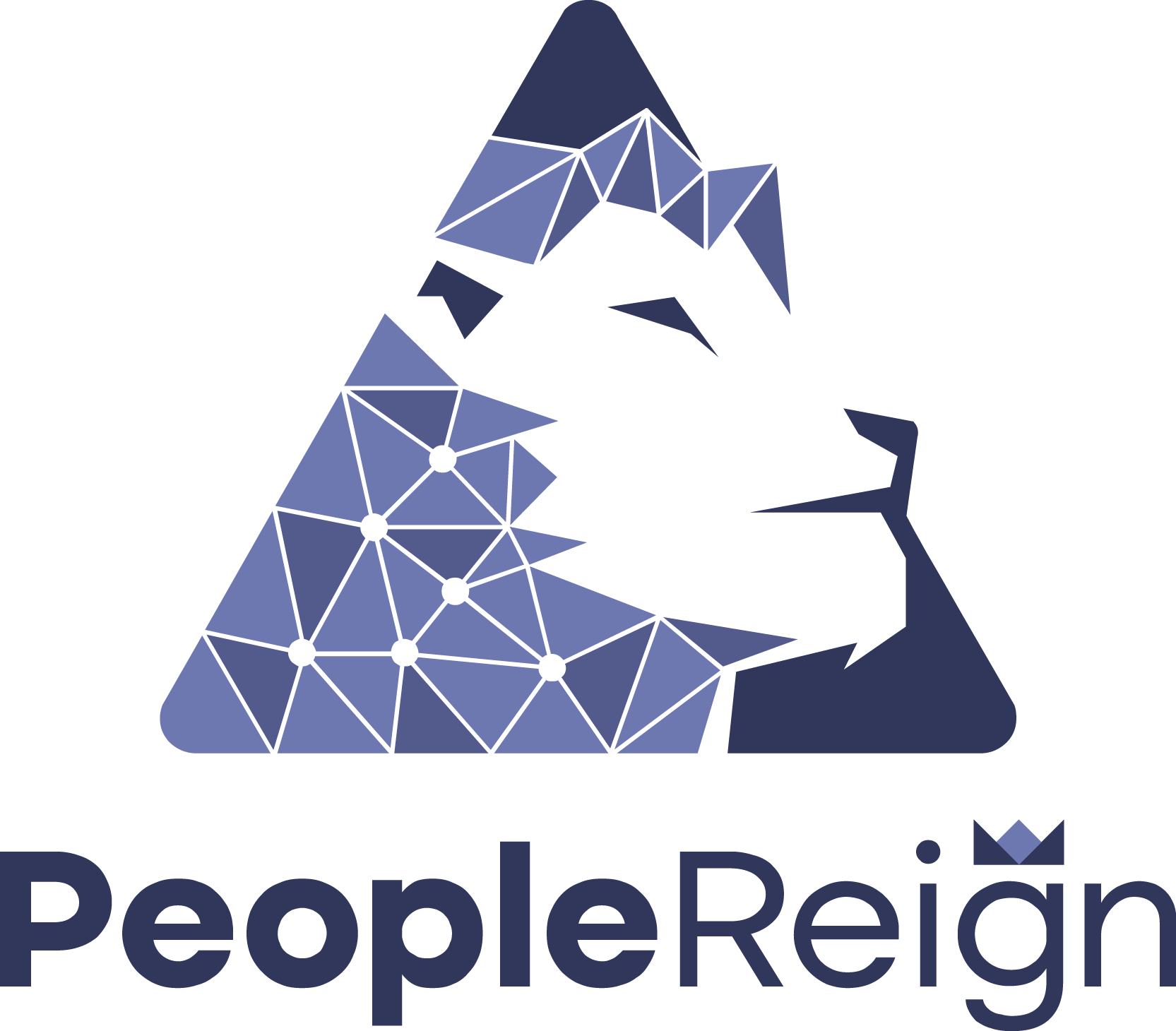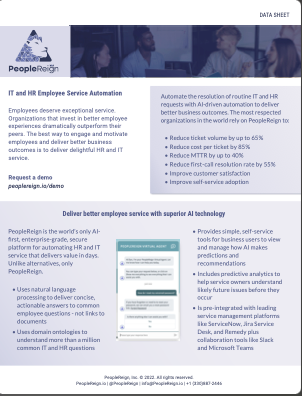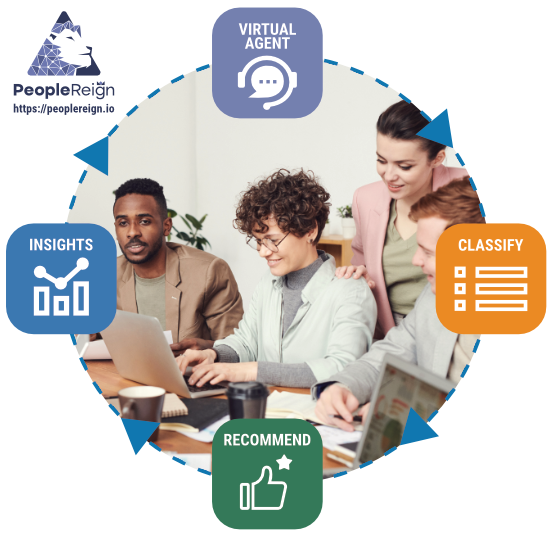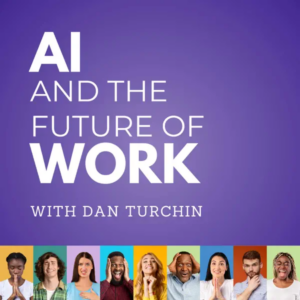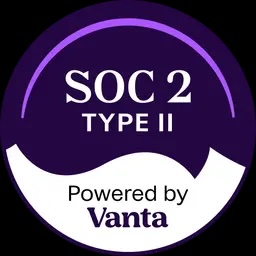This is a transcript from the AI and the Future of Work podcast episode featuring Edmundo Gonzalez, Co-founder and CEO of Marpai Health, discusses the future of AI to improve healthcare
Dan Turchin (00:23):
Good morning, good afternoon, or good evening, depending on where you’re listening. Welcome back to AI in the future of work. Thanks again for making this one of the most downloaded podcasts about the future of work. If you enjoy what we do, please like comment and share in your favorite podcast app, and we’ll keep sharing great conversation like the one we’ve got today. I’m your host, Dan urchin advisor at insight finder, the system of intelligence for it, operations and CEO of people rein the AI platform for it and HR employee service. Today, we’re picking up on a theme. We discussed a few weeks back with Patty Podminobin from demo consulting. We started a discussion about the future of healthcare for employees, but also about how your data is being used to make automated decisions about your health and what you should know about how AI technology is dis remediating hospitals and insurance providers.
Dan Turchin (01:19):
Bar health is pioneering a new way for employees to get better care with, call it less friction by guiding you through the complexities of your existing health benefits plan. We’ve all felt anxious over not knowing what’s best, say, you know, in network versus out of network HMO versus PPO, high deductible versus low deductible. It’s super confusing. Maybe all we need. It is a little concierge service provided by AI. We’re joined today by Muno Gonzalez, co-founder and CEO of Mar health. The company behind the app that helps you understand your health benefits. Muno founded Mar in April of 2019, and has since launched the app, grown the team and take in the company public on the NASDAQ last October as you. And I know from trying to understand our own benefit statements, ed Munos work is just getting started before Mar ed Muno was an investor and operator at companies like freight hub, three 40 B technologies, and Chalkable in the ed tech space, which was acquired by power school without further ado. It is my pleasure to welcome and moon note to the podcast and moon note. Let’s keep things off by having you share a little bit more about your background and Hey, got into this space.
Edmundo Gonzalez (02:36):
Sure. Well, it’s a pleasure to be here with you, Dan, and it’s it’s gonna be a great conversation. I can already sense it. I got into this space because I have been in basically the tech space, all of my professional life investing in companies and also building them as a founder, an entrepreneur, and I just saw such a huge opportunity to make people’s life better in a very transformative way. And let me explain a lot of how we consume our healthcare, especially in the United States, which is a different, as you may know than basically all other advanced economies. A lot of that has to do with the health plan, meaning who is covering us what kind of benefits are we getting from that plan? So I started this company really with a very simple, I said, Hey, what if we could predict who’s gonna be sick or who’s gonna have a high cost event way before it happens with that information. Can’t we actually help that person, that member of our plan make some choices to potentially prevent that high cost event or at least to better manage it. That’s how it all started. And it’s been quite a journey, as you said, it just in just a few years,
Dan Turchin (04:11):
We’ve heard a variety of perspectives on what’s broken about healthcare in the us and something. We haven’t talked too much about it’s what’s broken about the third party administrator or team system. I imagine you might have some thoughts on that.
Edmundo Gonzalez (04:27):
Yeah. Well, first of all, for, for your listeners. So let me just define this. So you know that in healthcare about half of us in America are getting our healthcare benefits from our job. These are the employer sponsored health plants right now, those come in two flavors. Companies can either buy insurance. So from companies like blue cross or from Aetna, Cigna, et cetera, these are a huge, huge companies. Now all of that is an insurance product. Meaning your company is paying a fee per employee per month to have you insured. Now there’s another model which about half of companies use certainly companies that are above a few hundred employees. That’s called self-insurance. Self-Insurance really means that you as a company are paying for your employees healthcare as they consume it. So there’s no insurance per se. You’re actually getting those bills, those medical claims.
Edmundo Gonzalez (05:33):
So then you’re paying ’em now think about it. What if you’re a law firm and you have 300 employees, well, you may be really good at practicing law, but you don’t really know how to pay a medical claim. This is there’s art and science to this. That’s where we come in. We are what’s called a third party administrator or TPA. And what we do is essentially administer all of the healthcare benefits for self-insured companies. We partner with them to essentially provide everything, everything from that little card you carry in your wallet which has the, in our case, obviously the Mar logo but everything we provide through partners, telehealth benefits, pharmacy benefits, everything that has to do with healthcare. We manage on behalf of our on behalf of our clients.
Dan Turchin (06:28):
What is it that most employees at these organizations with self-funded healthcare plans don’t understand about the process and what, what do they respond to best when they are introduced to a more modern alternative, like Mar
Edmundo Gonzalez (06:42):
You know, in, and if, if done right, the the healthcare benefit under self insurance looks and feels pretty much like it would under full insurance. In other words, the employee and the employee’s family would still have a plan with a deductible. They can still have, you know, access obviously to, to most doctors or any doctor depending on, on the plan. So the look and feel of that is, is pretty similar. Now, how, how are we really changing this for the benefit of employee and obviously for the benefit of employees it really is about taking a look at a member’s journey that healthcare journey as that member goes through life. Meaning if that member is going to CVS to get the fifth script of a certain drug, for example, what our algorithms are doing is taking that little data point, which is happens every day.
Edmundo Gonzalez (07:52):
You know, as we walk around, as we go about our business, we’re taking that little data point, but comparing that with all of the medical claims that that member has. And also, where does that member live? What’s his age or her age who is that member? And we’re comparing that to a huge research universe that we have built with tens and tens of millions of claims, millions and millions of people, essentially a universe that looks like society. And then our algos say, Hey, well, this member that just got, again, that fifth script at CBS actually looks like these 10,000 people over here who ended up in the ER in three to six months. So we should intervene and see what’s going on with that number. So that’s, that’s the predictive power. This is how all of these algos really work. Now, what happens then, you know, prediction is not really worth much without action.
Edmundo Gonzalez (08:58):
So what we do is we have a team of care team RNs, essentially that are looking at these predictions and then reaching out to the member and getting them to the right care. What does that mean? Well, the right care in many cases may mean a visit to your a primary care physician or internist. It may mean some labs, but it may that, that those are very simple, kind of low cost events for the member and for the plan, in many cases, it’s free to the member, but that visit may put that member on, under a doctor here now in a maintenance drug. And let’s say that maintenance drug costs $50 to the plan. Maybe the co to the member is $10. So that event may keep that member out of the ER in six months. That’s what we do. That’s what we do. We’re closing the loop in a gap before those gaps become really problematic for the member. And obviously for the plan who is paying for all of this, we, our strategy is really too prong. We want to get higher health outcomes, essentially healthier people. That directly translates to lower costs for our clients who are paying the bill. Essentially. They they’re remember these are self-insured clients. So they’re paying for all claims as they come.
Dan Turchin (10:27):
It sounds so obvious to hear you describe it. And listeners of this show know that just about every week, we talk about how data is being used to make better automated decisions across the all industries, whether it’s, you know, education or construction or defense or anything else. And yet the current process of how healthcare reimbursement decisions are made, at least to, to me, is fairly opaque. And although it just seems patently obvious that you use data to make these decisions. What’s the current process and how could it be any different from what you just described?
Edmundo Gonzalez (11:04):
Well, first of all, the data of, of accepting a claim or not exactly being a claim, that that is certainly part of what we do. And look, we are into this business because we wanna provide healthcare benefits. We wanna make sure that we’re doing this proactively, Dan, you know, in our, in our great country, we have, what’s called a, what I call at least a sick care system. Meaning if you’re sick, we are the best in the world of treating that and expanding your, your, your life’s span and just getting you well, what we’re not really good about is actual healthcare, meaning proactive health that that keeps you from being sick. So we have used, first of all, accepted that, that is reality, that we’ve used all of the data that a normal payer would have. And we have transformed that to be a proactive tool on behalf of our members.
Edmundo Gonzalez (12:09):
So we are not about rejecting flame. We want to get you to your primary care physician. You know, we just launched a whole program on gaps in care. So if you’re a female of a certain age, you should be getting your mammograms. If you’re male of a certain age, you should have a colonoscopy. This saves lives. Now, does it increase a little bit the cost to the plan? Of course it does, but that’s an investment in keeping you out of a hospital or having a very, very high cost event in the future. The thing is a lot of us in America. And I include myself there. We, we haven’t really been taught to take those preventative care measures. That’s what we’re doing now. We’re doing it, of course. Not only broadly speaking to keep everyone healthy, of course we’re doing that.
Edmundo Gonzalez (13:07):
We’re actually very focused on people that are on a journey to really end up with a high cost event in three months, six months, you know, 12 months E essentially in the near term, why are we doing that? Well, this is obviously very costly in terms of human health first and foremost. And secondly, that is what’s driving our healthcare costs. Our healthcare costs are higher than any industrialized country out there on a per cap to basis because we’re not as proactive as we should be. So we’re targeting those very costly events first while obviously our, our long term goal is just transforming how we as a population approach health in terms of proactive measures to keep our, our health outcomes up.
Dan Turchin (14:00):
So now is where the conversation gets a little bit a little bit complicated. So with say with great power comes great responsibility. You’re using people’s data to build deep learning models, to predict risk to your point. You know, we want to provide healthcare, not sick care. I think that’s a nice way to say it. But the cost of a false negative something, someone is at risk and you miss it is great as well as the cost of false positive. Yes, you, you, you predict that someone is in grave danger, and in fact, they’re not talk to us about how you using data, how you build the deep learning models and how do you mitigate the risk of false positives and false negatives.
Edmundo Gonzalez (14:46):
You’re, you’re, you’re hitting the nail on the head look in the world of artificial intelligence. You really have two big metrics. I’m talking like big picture and that’s, what’s called precision and recall, right. Let me, let me deal with recall. First recall is essentially your capture rate, right? So let’s say in a population of 10,000 employees and their families that you had for certain meaning that if you could tell exactly what that population was like, you had 200 people that were going to, they were on a journey for sure. Going to develop a certain condition. Well, the model, meaning the AI that you develop to predict who those 200 are, that has to be measured on recall and precision. So recall is basically the rate of how many of those 200 you actually should. Okay.
Edmundo Gonzalez (15:53):
Now precision is the other side. Precision means, let’s say that your model said, well, it’s these 200, well, how correct were you meaning we’re only a hundred of the 200 actually developing this condition. That would mean your precision rate was 50% not very good. Right. what I a kind of err on is recall, recall, meaning I want to capture as many of these cases as possible. This is a moral argument as well. And by the way, these two metrics fight with each other or so you can have very high recall and low precision and very high precision and low recall. Right? it, it’s a natural kind of attention when you’re building these models, but our job here is to capture as much as possible. So then it gets to the other side. Well, you may have some false positives now what’s a false positive in our mind.
Edmundo Gonzalez (16:56):
Okay. So you went to the doctor and thank goodness, you actually didn’t have this condition, you know, but was that doctor’s visit a waste of time? I don’t think so because they also captured your weight your blood pressure, right? So the cost of the false positive for us is normally a quote, unquote wasted primary care visit. I don’t think it’s a waste. I really don’t. But that’s, that’s how we’re thinking about this and look being moral right in this, in this space is, is quite important. So we, we could well make the decision to have almost perfect position and then miss some, essentially our recall would be lower. I just don’t think that’s morally right. And we’re not gonna do it.
Dan Turchin (17:45):
Okay. So to everyone listening play that back a few times that that last couple minutes was it, it captures a lot about how AI driven decision making works. And that does really well said in Muno. So as a patient, I obviously want to benefit from models that, that have high precision and high recall, like these said, you know, they they’re trade offs. And we, we, as a patient, I benefit from you know, better functioning, more accurate AI models. And yet the conundrum is that I don’t necessarily wanna volunteer my data to benefit everyone else to improve these models. So the E you mentioned ethics kind of talk us through the ethics of you. You need a lot of data and the data comes from patients. Yes. And you know, how, how do you what, what’s your pitch pitch to patients whose data you’re aggregating to feed the deep learning models to benefit everyone?
Edmundo Gonzalez (18:44):
Look, this is it’s, it’s such an important question. And I think we, as a society are going to continue wrestling with, with this meaning, do I benefit from the prediction from, from the product essentially that’s being offered to me, but am I giving up something, some privacy, something that is mine, and by the way, it is yours. If anyone tells you differently, you should know that the data are your first and foremost, right. I think that’s a natural tension that we, that we will continue battling. I’m not sure we’re completely there as a society in terms of having an answer to, to all of this. What I will share with you is that our research library of tens, of millions, of, of patient information, it’s all mostly claims by the way, that is anonymized that I have, I have actually purchased from states or gotten into partnership with states.
Edmundo Gonzalez (19:44):
So that data is never our client data, our client data live data, meaning it’s it’s data as that member is going to CVS, or is going to the doctor for the fifth time, in the short span of time. But that and then that data, by the way, is, is only used to predict, you know, what that member is is experiencing or not experie. So there’s, there’s a very different world here. And it’s very important for listeners to understand AI is, is a technology. It’s not a product. Okay. And that technology needs to be trained. It has to learn just like our human brain learns. So it’s important that it learns on a huge, huge amount of data, but that data doesn’t have to be yours. That data is normally purchased an, an anonymized way. So I can tell someone is male that someone potentially has this weight or that weight, but all of that world is in our research data universe. and that’s certainly not the, the data that you’re sharing with us on a live basis.
Dan Turchin (20:57):
But so let’s say hypothetically speaking the source of your data, let’s say states, like you mentioned their process for aggregating the, I get that it’s anonymized, but let’s say that those who volunteer their data to the state may not be representative of the distribution of let’s say, ethnicities, races, genders across the whole population. So you’re potentially purchasing data and making the decisions, training deep learning models based on it that inherently has some bias in it. How do you, how do you defend against that
Edmundo Gonzalez (21:34):
First and foremost, the fight against bias is realizing that bias is a thing, right? So you can’t really solve a problem. You don’t acknowledge it’s a problem, the way you actually fight that if you will, is first and foremost, having huge data sets. So you can’t have a representative sample or call that representative of America and have tens of thousands. You really need millions. They have to be diverse. And then, then you check. So is the ethnic composition, for example, of your data set representative of America, or if you’re not targeting America, let’s say that your whole market was Florida, for example. Well, does it look like Florida in terms of age raise everything, you know, access to food you know, the income in remember that the drivers of health are varied. This is a complex world.
Edmundo Gonzalez (22:35):
and that’s, you have to realize this, right, your zip code matters in terms of your health outcomes. So do you have all zip codes or do you have zip codes that look like this zip code? Right? You have to realize these items in order to make sure that your training data is valid and representative of the target population. In other words, you have to have apples and apples that apples and oranges and it it’s a constant item. One has to really be very careful of we’re. We’re very passionate about making our research universe look like the clients that we’re serving across the country
Dan Turchin (23:24):
As a consumer and employee, a patient who’s impacted by the decisions made by these deep learning models. Should I know when a decision was made based on AI and depending on your response to that question, should I understand what inputs were used to make that decision? How, how much configurability or explainability should I expect as someone whose healthcare decisions are made based on AI?
Edmundo Gonzalez (23:58):
Yeah. So let me actually separate here the items a bit, because I think the, your, your, your, your question has many nuances and they’re all important. So first and foremost we’re not really making decisions based on, on our deep learning model, what we’re doing is identifying anomalies and identifying items that are not normal. And I say that, what, what does normal mean? It means that it’s not what’s expected and what, what is expected? Well, again, a research universe of millions and millions of, of interactions, millions and millions of healthcare journeys, right? So this journey, if it’s, if comes to an alert driven by our, by our algos is kind of atypical. So that’s that’s first and foremost, but then what happens? Well, we’re not saying, okay, this person is for certain going to get X, Y, and Z.
Edmundo Gonzalez (25:01):
We’re saying let’s get that that journey looked at by a clin mission. So our care team immediately looks at this and intervenes meaning interacts with that member, with that patient and gets them to the right care. The, ultimately we need to have the power of healthcare decision making in the hands of doctors. Our tools are essentially moving you to that doctor to the right care, to the high quality physician, right? This is all data that we’re, we’re also looking at in terms of quality. That’s a whole other item as well. So it’s not really a decision may as much as alerting the member by a, by a care professional that something has gone kind of off normal. That’s, that’s really the the bottom line here in the future. Should you be that this prediction was made at least in part by an AI?
Edmundo Gonzalez (26:14):
I think so. I think so. I think by the way one would be surprised to understand how much of our daily movements, whether it’s a shopping or selection of what you buy in the the grocery store, how much of that is actually driven by data and advanced analytics like AI, not only AI, but like AI and yes, this, this would be one as well, but these are helpful tools to get you to the right care. It’s not the care. Let me just separate that and be very clear. Your listener should know, and deep learning is not going to prescribe medicine to you. It’s not gonna give you an MRI or prescribe an MRI. It’s really telling the team, Hey, take a look at this patient, because there may be some things that are, that are going kind of off track.
Dan Turchin (27:10):
So in all data driven fields, a common, obvious hypothesis is that the one with the most data wins and in healthcare, we’ve seen pretty aggressive moves into the space from big tech, from apple and Amazon and Microsoft, even Facebook, because they own the data. What’s, what’s your counter argument. How can Mar pay win when you’re competing with these massive incumbents that own all this data?
Edmundo Gonzalez (27:45):
You know, they, first of all, big tech does have a massive amount of data, but we want the right data. Like, do they have health records? Not really, do they have a medical claim? Certainly not. Right. So we, you have to also focus what’s right. What is what what’s right. In terms of data, what is going to give you accurate models that can change people’s health trajectory? It’s really, I guess there could be some some items that have to do with your, you know, Instagram pattern and consumption of Instagram, but really it’s different data. and I think that’s, what’s so fascinating and so interesting here. I mean, think about it. All of our predictions here are actually not made with health records. It, it sounds counterintuitive, but we’re not using health records. That’s to the challenge, right. We love hard problems.
Edmundo Gonzalez (28:48):
So we, as a healthcare payer, as, as a administrator healthcare benefits, we have medical claims. We obviously have population statistics, like where you live who eh, how old you are, et cetera, where you male, female email, but we’re making a lot of our predictions on are based on claims, but it’s not health records, right? So there’s many ways to get at actionable data and actionable insights. And I don’t believe the, the issue of, you know, evermore is best. Certainly they, they have their businesses and everything, but it’s really the right data, you know, are you creating a universe of unbiased data that looks like society, and then is, does that data have enough signals that your algorithms can then train and learn from, and then apply to me as I go to CVS, or as I go to my doctor for the fifth time and generate the same medical claim. That’s a big question. We’re doing it by the way, but the, we at large, not so much.
Dan Turchin (30:04):
So the biggest insurance companies and the biggest third party administrators do own a lot of the claims data. We know, certainly in, in the technology field, we know that they tend to be tech, laggards, not tech leaders. And that’s what gives companies like Mar pay and opportunity to disrupt them. But given that they obviously eye the same opportunity to digitize and monetize their data and build better models. What has their response been to Mar Pace’s entrance into the market?
Edmundo Gonzalez (30:36):
You know, so far a lot of our growth has been actually from groups that are moving from those fully insured behemoths to self-insurance just because they can’t afford it anymore. Meaning companies wanna provide great healthcare. It’s, it’s, it’s part of the overall benefit, just like your salary, right? I mean, it’s, it’s part of what you get by being part of this company, being an employee and company X, Y, Z, but the cost has just been completely prohibitive. So far they have still been the sleepy giants. I don’t expect that to continue. Right. So, so far it has been I wouldn’t say easy nothing’s ever easy, but we have really operated and grown and continue to grow without much interference. I will tell you that we even with, with two of the largest Buka essentially the, the big players we actually read their entire national network. So we’re able to give our you know, members access to all of these national networks, which is great because that access is the key. We want our members to be able to access any doctor. They want our networks covered 90% plus of, of all doctors and facilities in America. Right. So I think they have found ways to, you know, still monetize even when they’re not the primary provider of, of the healthcare benefit.
Dan Turchin (32:19):
So Polish your crystal ball, let’s say in 10 years, we’re having a version of this conversation and Mar’s wildly success. How is life different? How is healthcare different for me as a as an employee?
Edmundo Gonzalez (32:31):
Well, I think first and foremost health has become proactive, right? So health is not something that happens to you. Health is something you drive, and that is a, it sounds so simple. It’s completely hard to do all of that movement has much more to do with behavioral economics and psychology than, than any AI. Right. But I think our responsibility as payers of the future is really to get products that are easy to use, easy to understand then deliver tangible value to members, meaning, oh, this tool actually reminded me that I hadn’t had my colonoscopy, or if you email, I hadn’t had my mammogram in its time. And then something is found and a life is saved. That is remarkable, you know, in the world. But it’s also remarkable for that member for that member’s family. And then that spreads that that is the news right around the cooler, even if it’s a virtual water cooler these days with us, with us working from home.
Edmundo Gonzalez (33:47):
But that is what do we do. And I think that is the change that will drive members to really use some of this, essentially not just take their healthcare benefit for granted and say, okay, when I’m sick, I have my little card and I go to the doctor, but really how, how are you looking at this proactively? How are you looking at the measures that impact your likelihood to have diabetes in the next, you know, three, four years, all of that has to do with education and the health plan must be at the center of this. So that’s part of the transformation we’re doing. It’s a very, very exciting time for us, for our members, obviously, and for our employer group clients. But yeah, the, I see the future, the future is proactive
Dan Turchin (34:40):
And moon though. We’re bad at a time, but I’m not letting you off the hot seat without answering one last question for me. So we’ve been talking mostly about the benefits administration process, but want your perspective on the future of medicine. So through the last couple years in the pandemic, obviously there’s been a massive shift toward telemedicine, but also the advent of where monitors sensors is there a future in which instead of me having to go to the hospital to get some kind of medicine or healthcare service delivered, will it ever come to me? Is there ever a, you know, a time when that traditional notion of, you know, me having to do a doctor’s visit and sit in the waiting, that sort of thing, could, could that very notion of how we get healthcare delivered ever be disrupted.
Edmundo Gonzalez (35:31):
You bet it is. And it’s already being disrupted in many cases where there’s home care, especially for seniors or for people that are experiencing long term care at home. The cost of that delivery is a fraction of the current model. It’s where we need to go. And all of these wearables and things think of this, although they, that, that segment looks mature, it’s just starting. It really is just starting. And I think, you know members of, of health plans I include myself here have a role to play in the development of this space. Some of it is scary because of course it’s collecting data. It may be syncing it with your iPhone, but the benefits of that, I think in the, in the years to come, are going to so outweigh any concerns on, on, on data that I, my personal prediction is that I think the majority of members will opt to some sharing just because the benefit is so great.
Edmundo Gonzalez (36:41):
So, no, I do believe that the future is personalized and the future is certainly more at home, but don’t confuse the machine, meaning the little device with the healthcare provider. This is all tools, a stethoscope, all schools, stethoscope, it’s basic a tool. Your watch can become that stethoscope. It’s just remote. You have it live. You know, that’s, that’s really the future. I think that’s the way to think about it. These are tools that are monitoring you for your benefit. You call the shots, you say what you want to monitor and what you’re worried about in order to, to take care of yourself. And in order finally, to move to a real healthcare system versus sick care system,
Dan Turchin (37:24):
And Muno has been fantastic. I’ve really enjoyed it. We’re we’re just scratching the surface so much more to discuss it’s if I could invite you back maybe another time we’ll we’ll continue discussion. How how’d that be?
Edmundo Gonzalez (37:36):
It would be my great pleasure. Thank you so much for having me. I enjoyed
Dan Turchin (37:40):
You bet. Anything else our audience should know about Mar or where they can learn more?
Edmundo Gonzalez (37:44):
No, certainly. One can learn more at www Mar health.com and Mar is M a R P a I health.com. Thanks so much, Dan.
Dan Turchin (37:54):
Fantastic. Great having you here. And that’s a wrap for this week. I’m your host, Dan of AI and the future of work. We will be back next week with another fascinating guest.
